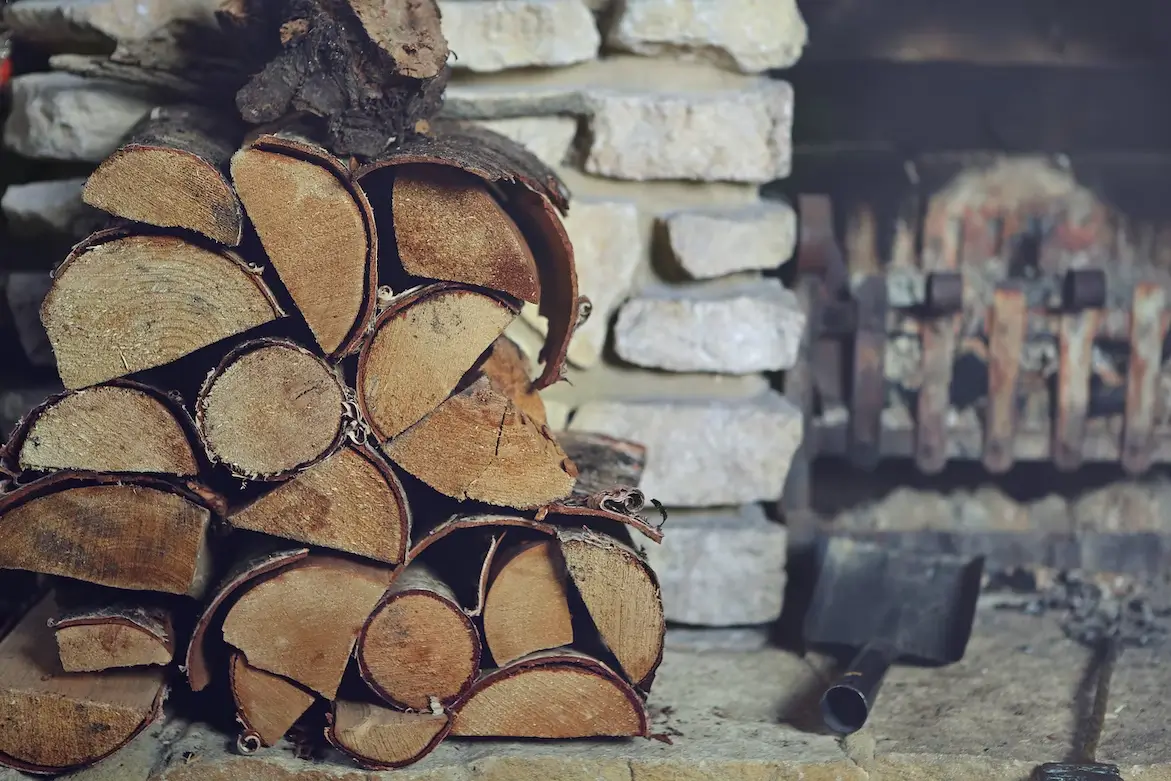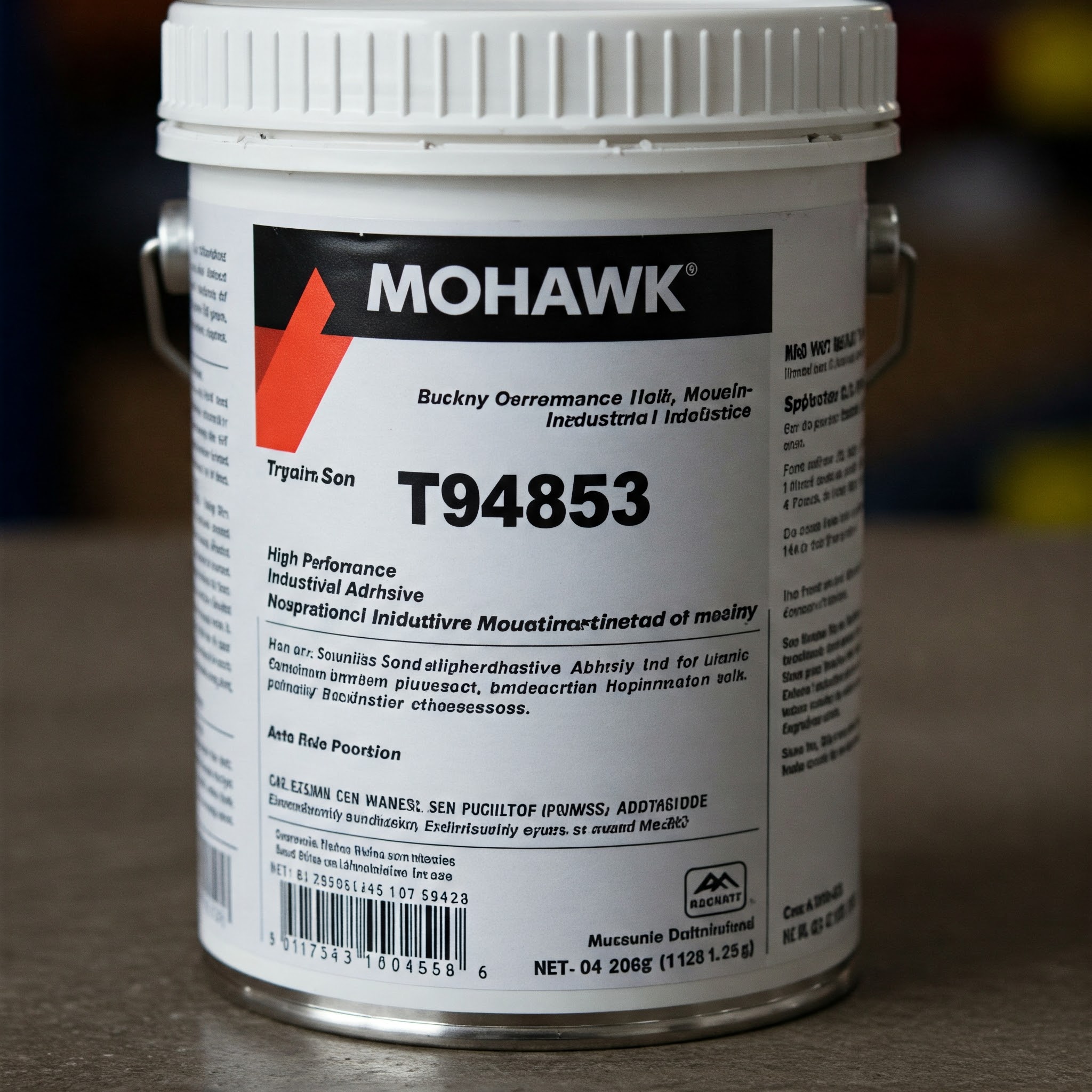Other
4 Different Types of Firewood: Which is Best for Your Needs?

When it comes to firewood, not all wood is created equal. Different types of wood bring different advantages to the table and can be used for different purposes. Whether you’re looking for a reliable heat source this winter or making a campfire for roasting marshmallows this summer, understanding the different types of firewood is essential for finding the wood that best suits your needs.
1. Wet vs. Dry
Wet firewood is freshly cut and has a high moisture content. It is not as easy to ignite as dry firewood, but it will burn hotter and produce more flames. It’s important to store wet firewood in a dry environment to keep it from rotting. Wet firewood can also be difficult to keep burning, as it requires more tending.
Dry firewood on the other hand, is aged and has a low moisture content. It is easier to ignite, but it will burn more slowly and produce less flames. Dry firewood is also more efficient, requiring less tending and resulting in less ash and smoke. Additionally, dry wood produces a longer-lasting fire, making it the preferred choice for overnight burning.
When it comes to selecting the best type of firewood for your needs, it is important to consider the moisture content, ease of ignition, heat produced, and burning time. Wet firewood is best for short-term burning and quick heat, while dry firewood is ideal for long-term burning. Ultimately, the choice between wet and dry firewood will depend upon the duration of your fire and the amount of heat you need.

2. Seasoned vs. Unseasoned
Seasoned firewood is wood that has been cut and allowed to dry for at least six months. During the drying process, moisture is removed from the wood, causing it to become lighter and easier to burn. Seasoned firewood also produces less smoke and sparks than unseasoned wood, making it ideal for those who want to avoid the mess that can result from burning unseasoned wood.
Unseasoned firewood is wood that has been cut but not allowed to dry. This type of wood is heavier and produces more smoke and sparks than seasoned wood, making it more difficult to ignite. Additionally, unseasoned wood contains more moisture, contributing to the production of soot and creosote – two byproducts of burning wood that can build up and can ultimately lead to chimney fires.
So which type of firewood should you choose? If you are looking to get a fire going quickly and without a lot of fuss, seasoned firewood is the way to go. Seasoned firewood is easy to light and produces less smoke and sparks than unseasoned wood, making it ideal for those who want a clean and efficient burning experience. On the other hand, if you don’t mind a bit of extra work and mess, unseasoned firewood can be a great choice. The higher moisture content of unseasoned wood can make it easier to ignite, and can produce a longer lasting fire.
Are you looking for dry birch wood for your next DIY project? Look no further! Here at Vedora, we offer dry birch wood 40l sacks online – tørr bjørkeved 40l sekker.
3. Hardwood vs. Softwood
Hardwood is denser and heavier than softwood, which means it burns for a longer period of time. This makes it an ideal choice for burning in a fireplace or stove. Hardwood is also more expensive than softwood, so it’s best used when you need a longer-lasting fire.
Softwood, on the other hand, is lighter and burns more quickly than hardwood. This makes it a great choice for those who want a fire that will start quickly and be easy to handle. Softwood is also more affordable than hardwood, which can be beneficial for those working with a budget.
You can always mix and match different types of firewood to get the best of both worlds. Just make sure to stack the wood properly so that the air can circulate and the fire can breathe. This will help you get the most out of your firewood no matter which type you choose.
4. Softwood vs. Hardwood
Hardwoods are the best firewood for achieving high heat output, burning cleanly and slowly, and providing a pleasant aroma. Examples of hardwoods include oak, hickory, and maple. Hardwoods are dense and heavy, and tend to burn for a long time, making them ideal for overnight fires. However, they can be difficult to split and require more effort to get them started.
Softwoods are easier to split and start than hardwoods, but don’t provide as much heat output. Examples of softwoods include cedar, juniper, and pine. Softwoods burn quickly, making them great for quick campfires or fires when you need to get warm quickly. However, they produce more smoke, which can be unpleasant, and don’t provide as much heat as hardwoods.
Mixed hardwood is a combination of hardwood and softwood, usually consisting of mostly hardwood with a few softer pieces. Mixed hardwood is a good middle-ground, providing a decent heat output with less smoke than softwoods.
In conclusion
The type of firewood you choose depends on your individual needs. Whether you’re looking for a reliable heat source this winter or making a campfire for roasting marshmallows this summer, the right type of firewood can make all the difference. By understanding the different types of firewood available and their properties, you can make an informed decision and choose the firewood that best suits your needs.
Other
What Is Mohawk T94853? A Comprehensive Guide to the Lineate Figured Luxury Vinyl Tile

What Is Mohawk T94853?
Mohawk T94853 is a premium luxury vinyl tile (LVT) from Mohawk Group’s Lineate collection. It features a unique design that combines ombré gradations of color with textile-like striations, resulting in a richly dimensional visual. This design allows for mixing and matching of styles to create abstract, modern flooring designs suitable for various commercial settings.
Who Is Mohawk Group?
Mohawk Group is a leading manufacturer of commercial flooring solutions, known for its commitment to sustainability and innovative design. With a focus on creating products that have a positive impact on the environment, Mohawk Group offers flooring options that are Beyond Carbon Neutral, meaning they include an additional 5% carbon offset beyond neutral.
Why Choose Mohawk T94853?
Choosing Mohawk T94853 offers several benefits:
-
Aesthetic Appeal: The “Figured” design provides a sophisticated, linear visual that enhances the design of any space.
-
Durability: With a 20 mil wear layer and M-Force™ Ultra finish, this LVT is built to withstand heavy commercial use.
-
Ease of Installation: The product supports glue-down and loose lay installation methods, offering flexibility for various project needs.
-
Sustainability: Being Beyond Carbon Neutral, it contributes positively to environmental goals.
-
Warranty: It comes with a Limited 20-Year M-Force Ultra Commercial Warranty, ensuring long-term performance.
Product Specifications
-
Collection: Hot & Heavy – Lineate
-
Style Code: C0089
-
Color Name: Figured
-
Color Code: 948
-
Product Type: Luxury Vinyl Tile (LVT)
-
Construction: Commercial Grade Loose Lay
-
Finish: M-Force™ Ultra
-
Surface Profile: Embossed
-
Edge Profile: Squared Edge
-
Plank Size: 9″ W x 59″ L
-
Overall Thickness: 5 mm
-
Wear Layer: 20 mil (0.5 mm)
-
Pieces per Carton: 6
-
Square Feet per Carton: 22.84
-
Weight per Carton: Approximately 40.78 lbs (18.49 kg)
Installation Guidelines
Mohawk T94853 supports both glue-down and loose lay installation methods. For glue-down installations, recommended adhesives include M95.0, M99, MS160, M700 Plus, or Total Bond Adhesive. Proper subfloor preparation and adherence to installation guidelines are crucial for optimal performance and warranty coverage.
Sustainability and Certifications
-
Beyond Carbon Neutral: Includes an additional 5% carbon offset beyond neutral.
-
Material Health: Free of orthophthalates and heavy metals.
-
Certifications: Participates in Mindful Materials Library and has a MindClick Rating of Achiever.
Applications
Mohawk T94853 is ideal for various commercial environments, including:
-
Corporate Offices: Enhances professional spaces with its sophisticated design.
-
Healthcare Facilities: Meets strict hygiene and durability requirements.
-
Educational Institutions: Provides a durable and aesthetically pleasing flooring solution.
-
Hospitality Venues: Offers a welcoming and stylish flooring option for guests.
Conclusion
Mohawk T94853 stands out as a premium flooring solution that combines aesthetic appeal, durability, and sustainability. Its unique design and robust construction make it an excellent choice for various commercial applications. By choosing Mohawk T94853, you’re investing in a product that not only enhances your space but also contributes positively to the environment.
Other
What Is https://shopnewsource.com/store/tramex-c155336211?
The URL https://shopnewsource.com/store/tramex-c155336211 directs to a product page on New Source Supplies, a U.S.-based distributor specializing in restoration and industrial equipment. This specific page is dedicated to Tramex moisture meters, renowned for their precision in detecting moisture levels across various building materials.
Tramex offers a range of moisture meters, including models like the MEX5 and ME5, which are designed for non-destructive moisture and humidity measurements in building structures. These devices are essential tools for professionals in construction, flooring, roofing, and water damage restoration, providing accurate moisture readings without damaging the materials being tested.
Who Is Tramex?
Tramex is a leading manufacturer of moisture meters and scanners, with a reputation for high-quality, innovative products. Their instruments are widely used in various industries, including construction, flooring, roofing, and water damage restoration. Tramex’s commitment to quality and innovation has made it a trusted name among professionals seeking reliable moisture detection solutions.
Why Choose Tramex Moisture Meters?
Tramex moisture meters are designed for accuracy, durability, and ease of use. They offer non-destructive testing methods, allowing users to assess moisture levels without causing damage to the materials. With features like dual-depth measurement and Bluetooth connectivity, Tramex meters provide comprehensive moisture analysis, making them invaluable tools for professionals.
Key Features of Tramex Moisture Meters
-
Non-Destructive Testing: Assess moisture levels without damaging materials.
-
Dual-Depth Measurement: Measure moisture at different depths for comprehensive analysis.
-
Bluetooth Connectivity: Easily transfer data to mobile devices for analysis and reporting.
-
Versatility: Suitable for various materials, including wood, concrete, drywall, and insulation.
Applications of Tramex Moisture Meters
Tramex moisture meters are used in a variety of applications, including:
-
Construction: Ensuring materials are dry before installation.
-
Flooring: Checking subfloor moisture levels to prevent flooring failures.
-
Roofing: Detecting moisture intrusion in roofing systems.
-
Water Damage Restoration: Assessing and monitoring moisture levels during the drying process.
Conclusion
The product page at https://shopnewsource.com/store/tramex-c155336211 offers access to Tramex’s high-quality moisture meters, essential tools for professionals in various industries. With their non-destructive testing capabilities, dual-depth measurement, and Bluetooth connectivity, Tramex moisture meters provide accurate and efficient moisture analysis, helping professionals make informed decisions and prevent potential issues related to moisture intrusion.
For more information and to explore the range of Tramex moisture meters, visit https://shopnewsource.com/store/tramex-c155336211.
Other
America’s Drug Overdose Epidemic: A Silent Crisis Destroying Lives

Missouri, USA – The United States is experiencing a drug overdose crisis, with fatalities exceeding 100,000 annually. The increasing prevalence of synthetic opioids, particularly fentanyl, has intensified the situation, resulting in widespread public health concerns.
The Science Behind Addiction: How Drugs Take Control
Substance abuse significantly alters brain function, particularly within the brain’s reward system. By flooding the brain with dopamine, these substances create an artificial sense of pleasure. Over time, dependence develops, reducing the brain’s ability to regulate impulses and decision-making. This process leads to a cycle of addiction that often results in severe consequences. Please read more “I Did Not Know”
Drug Overdose: A Growing National Epidemic
Communities across the nation continue to experience the escalating effects of substance abuse. Key statistics highlight the severity of the issue:
- Over 100,000 drug overdose deaths were recorded in 2022.
- Fentanyl, a synthetic opioid 50 times more potent than heroin, is increasingly present in illicit drug supplies.
- Many individuals overdose without awareness of consuming a fatal dose.
Unregulated drug availability, misinformation, and misconceptions about the risks of substance use continue to exacerbate the crisis.
The Consequences of Addiction
Substance abuse has far-reaching consequences beyond individual health impacts. Societal and economic effects include:
- The deterioration of long-term health and cognitive function.
- Increased criminal activity linked to substance dependency.
- The destabilization of families and communities due to addiction-related challenges.
Drug Prevalence Across Communities
Illicit substances have permeated urban, suburban, and rural areas, affecting individuals across all demographics. The proliferation of synthetic drugs and counterfeit pills has heightened the risks associated with substance use, often leading to unintentional overdoses.
The Link Between Drug Abuse and Crime
A strong correlation exists between substance abuse and criminal activity. Addiction can lead to offenses such as theft, assault, and violent crimes. Without intervention, the epidemic continues to contribute to increased crime rates and social instability.
Addressing the Drug Crisis
Efforts to combat addiction require multi-faceted strategies, including:
- Expanding education programs to inform individuals of the dangers of drug use.
- Promoting access to treatment and rehabilitation services.
- Strengthening regulatory measures to curb the distribution of illicit substances.
- Supporting initiatives aimed at substance abuse prevention and recovery.
Public Awareness and Action
Preventative measures and community engagement play essential roles in addressing the ongoing crisis. Collaboration between healthcare professionals, policymakers, and local organizations is necessary to mitigate the impact of drug addiction and prevent further loss of life.
-

 Travel3 years ago
Travel3 years agoNEW ZEALAND VISA FOR ISRAELI AND NORWEGIAN CITIZENS
-

 Technology3 years ago
Technology3 years agoIs Camegle Legit Or A Scam?
-

 Uncategorized3 years ago
Uncategorized3 years agoAMERICAN VISA FOR NORWEGIAN AND JAPANESE CITIZENS
-

 Health3 years ago
Health3 years agoHealth Benefits Of Watermelon
-

 Home Improvement6 months ago
Home Improvement6 months agoArtificial Grass Designs: Perfect Solutions for Urban Backyards
-

 Fashion2 years ago
Fashion2 years agoBest Essentials Hoodies For Cold Weather
-

 Uncategorized3 years ago
Uncategorized3 years agoHow can I write a well-structured blog post?
-

 Fashion11 months ago
Fashion11 months agoGoda Perfume Reviews: Is It Worth Your Investment?














